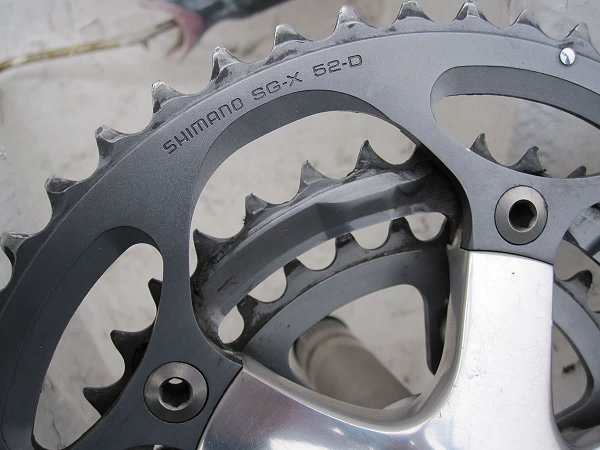How often does crank and cassette need replacing?
Bergren
Posts: 2
I took my bike in for a service last week, and the guys said the cassette, crankshaft and chain all needed replacing. I never had any noticeable problems whilst riding the bike, so I just wanted to check if anyone had experience of this. I believe the bike has done about 5,400 miles at an estimate.
Is it possible that the parts likely need replacing after this mileage? I've kept the bike well-oiled and maintained. I have a bad habit of riding in the same gear, but London is mostly flat so I don't feel like I'm putting too much strain on.
thanks
Is it possible that the parts likely need replacing after this mileage? I've kept the bike well-oiled and maintained. I have a bad habit of riding in the same gear, but London is mostly flat so I don't feel like I'm putting too much strain on.
thanks
0
Comments
-
After 5,400 miles it is reasonable to replace the rear cassette and chain. The front chainrings may need replacing if they have been ridden with a wornout chain.
The rest of the crank: the spindle cranks and spider should be fine. Sometimes it is cheaper to replace the whole crankset. The crank bearings may need replacing. If the bearings are a square taper sealed unit, then whole unit may need replacing if it is worn out.
You really should replace the chain when it approaches its wear limit. Measure using a chainguage. Worn chains appear elongated and the longer links wear the teeth into a shark's-tooth profile. A new chain would slip on the worn teeth.0 -
chain and cassette yes, I only normally get around 3000 - 4000 miles per chain. Chainset unlikely, my hybrid which mainly gets ridden in the worst of the weather has about 10k on the chainset and it still looks OK0
-
If it's not skipping then leave it on there. What are you going to get out of replacing the entire drivetrain?- - - - - - - - - -
On Strava.{/url}0 -
The chain rings will often last longer than the cassette and chain, not uncommon that it's the second replacement of a worn cassette and chain that the chain rings need replacing. Visibly it's hard to see when a chain and cassette are worn, although the chain may ride high on the chain ring.

A chain ring will often offer more visibly evidence, in the picture below you can see the middle ring has hooked teeth but the inner and outer appear to be far less worn.
As rule of thumb you often replace chain and cassette together then see if the part worn rings will accept them, in the set up above I would expect a new chain to slip under load on the middle ring, but should be OK on the inner and outer.
As for life expectancy personally I have a 'clean little and often regime', that way you not only have that lovely feeling of a smooth, clean and efficient transmission, but in short it will also last so much longer. After all a dirty chain not only feels awful, but acts like a grinding paste, reducing the life expectancy of your expensive chain, sprockets and chain rings. Note that little and often actually equates to quick and easy, as you are simply keeping the transmission clean as opposed to letting it get dirty, then spending an eternity getting it back to what it should be.
If you've done over 5000 miles then that is good, expect far less if run dirty. A LBS mechanic will often use a device called a Chain ckecker to check for wear, it varies from mechanic to mechanic as to when they decide to replace. Some may service the bike but when handing back comment that the transmission has some life still left in it, but expect to replace it before the next service. In the same circumstance another may decide to replace, although most should contact you before actually replacing if their is some mileage still to be had. As such always a good idea to state what you would like when you take the bike in for service and a quality LBS will be more than happy to oblige. After all they don't want a customer bringing a bike back three months after a service complaining that the transmission that is now worn out and should have been replaced when it was serviced, any more than they want a customer complaining that they've replaced something that still had some life in it.
Over time these are skills interms of maintenance that if the mood so takes you are easily obtained, it's not a high investment either financially to obtain the tools are to gain the necessary knowledge.
Paul Smith.0

